「Vue实战」武装你的前端项目
Posted 前端劝退师
tags:
篇首语:本文由小常识网(cha138.com)小编为大家整理,主要介绍了「Vue实战」武装你的前端项目相关的知识,希望对你有一定的参考价值。
本文项目基于Vue-Cli3,想知道如何正确搭建请看我之前的文章:
「Vue实践」项目升级vue-cli3的正确姿势
1. 接口模块处理
1.1 axios二次封装
很基础的部分,已封装好的请跳过。这里的封装是依据 JWT
import axios from 'axios'
import router from '../router'
import {MessageBox, Message} from 'element-ui'
let loginUrl = '/login'
axios.defaults.baseURL = process.env.VUE_APP_API
axios.defaults.headers = {'X-Requested-With': 'XMLHttpRequest'}
axios.defaults.timeout = 60000
// 请求拦截器
axios.interceptors.request.use(
config => {
if (router.history.current.path !== loginUrl) {
let token = window.sessionStorage.getItem('token')
if (token == null) {
router.replace({path: loginUrl, query: {redirect: router.currentRoute.fullPath}})
return false
} else {
config.headers['Authorization'] = 'JWT ' + token
}
}
return config
}, error => {
Message.warning(error)
return Promise.reject(error)
})
紧接着的是响应拦截器(即异常处理)
axios.interceptors.response.use(
response => {
return response.data
}, error => {
if (error.response !== undefined) {
switch (error.response.status) {
case 400:
MessageBox.alert(error.response.data)
break
case 401:
if (window.sessionStorage.getItem('out') === null) {
window.sessionStorage.setItem('out', 1)
MessageBox.confirm('会话已失效! 请重新登录', '提示', {confirmButtonText: '重新登录', cancelButtonText: '取消', type: 'warning'}).then(() => {
router.replace({path: loginUrl, query: {redirect: router.currentRoute.fullPath}})
}).catch(action => {
window.sessionStorage.clear()
window.localStorage.clear()
})
}
break
case 402:
MessageBox.confirm('登陆超时 !', '提示', {confirmButtonText: '重新登录', cancelButtonText: '取消', type: 'warning'}).then(() => {
router.replace({path: loginUrl, query: {redirect: router.currentRoute.fullPath}})
})
break
case 403:
MessageBox.alert('没有权限!')
break
// ...忽略
default:
MessageBox.alert(`连接错误${error.response.status}`)
}
return Promise.resolve(error.response)
}
return Promise.resolve(error)
})
这里做的处理分别是会话已失效和登陆超时,具体的需要根据业务来作变更。
最后是导出基础请求类型封装。
export default {
get (url, param) {
if (param !== undefined) {
Object.assign(param, {_t: (new Date()).getTime()})
} else {
param = {_t: (new Date()).getTime()}
}
return new Promise((resolve, reject) => {
axios({method: 'get', url, params: param}).then(res => { resolve(res) })
})
},
getData (url, param) {
return new Promise((resolve, reject) => {
axios({method: 'get', url, params: param}).then(res => {
if (res.code === 4000) {
resolve(res.data)
} else {
Message.warning(res.msg)
}
})
})
},
post (url, param, config) {
return new Promise((resolve, reject) => {
axios.post(url, param, config).then(res => { resolve(res) })
})
},
put: axios.put,
_delete: axios.delete
}
其中给 get请求加上时间戳参数,避免从缓存中拿数据。
浏览器缓存是基于url进行缓存的,如果页面允许缓存,则在一定时间内(缓存时效时间前)再次访问相同的URL,浏览器就不会再次发送请求到服务器端,而是直接从缓存中获取指定资源。
1.2 请求按模块合并
 模块的请求:
模块的请求:
import http from '@/utils/request'
export default {
A (param) { return http.get('/api/', param) },
B (param) { return http.post('/api/', param) }
C (param) { return http.put('/api/', param) },
D (param) { return http._delete('/api/', {data: param}) },
}
utils/api/index.js:
import http from '@/utils/request'
import account from './account'
// 忽略...
const api = Object.assign({}, http, account, *...其它模块*)
export default api
1.3 global.js中的处理
在 global.js中引入:
import Vue from 'vue'
import api from './api/index'
// 略...
const errorHandler = (error, vm) => {
console.error(vm)
console.error(error)
}
Vue.config.errorHandler = errorHandler
export default {
install (Vue) {
// 添加组件
// 添加过滤器
})
// 全局报错处理
Vue.prototype.$throw = (error) => errorHandler(error, this)
Vue.prototype.$http = api
// 其它配置
}
}
写接口的时候就可以简化为:
async getData () {
const params = {/*...key : value...*/}
let res = await this.$http.A(params)
res.code === 4000 ? (this.aSata = res.data) : this.$message.warning(res.msg)
}
2.Vue组件动态注册
来自 @SHERlocked93:Vue 使用中的小技巧
我们写组件的时候通常需要引入另外的组件:
<template>
<BaseInput v-model="searchText" @keydown.enter="search"/>
<BaseButton @click="search">
<BaseIcon name="search"/>
</BaseButton>
</template>
<script>
import BaseButton from './baseButton'
import BaseIcon from './baseIcon'
import BaseInput from './baseInput'
export default {
components: { BaseButton, BaseIcon, BaseInput }
}
</script>
写小项目这么引入还好,但等项目一臃肿起来...啧啧。 这里是借助 webpack,使用 require.context()方法来创建自己的模块上下文,从而实现自动动态 require组件。
这个方法需要3个参数:
要搜索的文件夹目录
是否还应该搜索它的子目录
一个匹配文件的正则表达式。
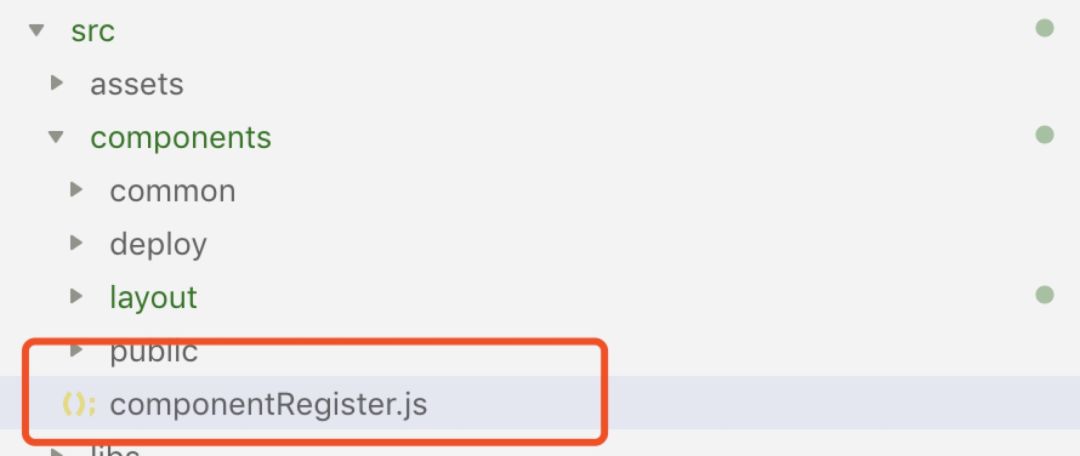
在你放基础组件的文件夹根目录下新建 componentRegister.js:
import Vue from 'vue'
/**
* 首字母大写
* @param str 字符串
* @example heheHaha
* @return {string} HeheHaha
*/
function capitalizeFirstLetter (str) {
return str.charAt(0).toUpperCase() + str.slice(1)
}
/**
* 对符合'xx/xx.vue'组件格式的组件取组件名
* @param str fileName
* @example abc/bcd/def/basicTable.vue
* @return {string} BasicTable
*/
function validateFileName (str) {
return /^S+.vue$/.test(str) &&
str.replace(/^S+/(w+).vue$/, (rs, $1) => capitalizeFirstLetter($1))
}
const requireComponent = require.context('./', true, /.vue$/)
// 找到组件文件夹下以.vue命名的文件,如果文件名为index,那么取组件中的name作为注册的组件名
requireComponent.keys().forEach(filePath => {
const componentConfig = requireComponent(filePath)
const fileName = validateFileName(filePath)
const componentName = fileName.toLowerCase() === 'index'
? capitalizeFirstLetter(componentConfig.default.name)
: fileName
Vue.component(componentName, componentConfig.default || componentConfig)
})
最后我们在 main.js中
import 'components/componentRegister.js'
我们就可以随时随地使用这些基础组件,无需手动引入了。
3. 页面性能调试:Hiper
我们写单页面应用,想看页面修改后性能变更其实挺繁琐的。有时想知道是「正优化」还是「负优化」只能靠手动刷新查看 network。而 Hiper很好解决了这一痛点(其实 Hiper是后台静默运行 Chromium来实现无感调试)。
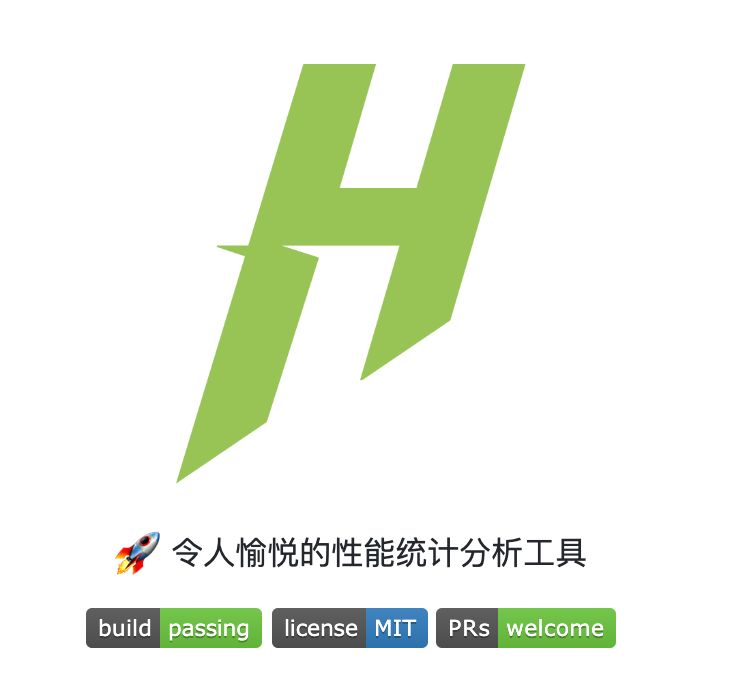
Hiper官方文档
我们开发完一个项目或者给一个项目做完性能优化以后,如何来衡量这个项目的性能是否达标?
我们的常见方式是在 DevTool中的 performance和 network中看数据,记录下几个关键的性能指标,然后刷新几次再看这些性能指标。
有时候我们发现,由于样本太少,受当前「网络」、「CPU」、「内存」的繁忙程度的影响很重,有时优化后的项目反而比优化前更慢。
如果有一个工具,一次性地请求N次网页,然后把各个性能指标取出来求平均值,我们就能非常准确地知道这个优化是「正优化」还是「负优化」。
并且,也可以做对比,拿到「具体优化了多少」的准确数据。这个工具就是为了解决这个痛点的。
安装
sudo npm install hiper -g
# 或者使用 yarn:
# sudo yarn global add hiper
性能指标
| Key | Value |
|---|---|
| DNS查询耗时 | domainLookupEnd - domainLookupStart |
| TCP连接耗时 | connectEnd - connectStart |
| 第一个Byte到达浏览器的用时 | responseStart - requestStart |
| 页面下载耗时 | responseEnd - responseStart |
| DOM Ready之后又继续下载资源的耗时 | domComplete - domInteractive |
| 白屏时间 | domInteractive - navigationStart |
| DOM Ready 耗时 | domContentLoadedEventEnd - navigationStart |
| 页面加载总耗时 | loadEventEnd - navigationStart |
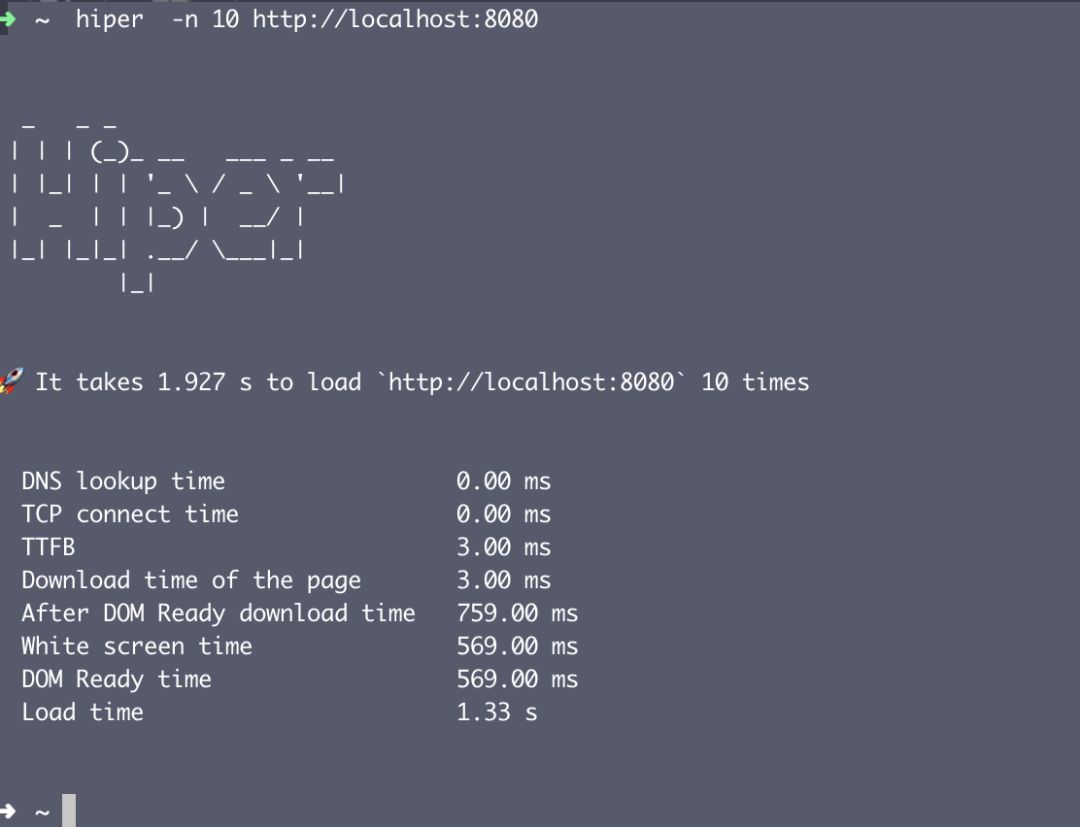
用例
# 当我们省略协议头时,默认会在url前添加`https://`
# 最简单的用法
hiper baidu.com
# 如何url中含有任何参数,请使用双引号括起来
hiper "baidu.com?a=1&b=2"
# 加载指定页面100次
hiper -n 100 "baidu.com?a=1&b=2"
# 禁用缓存加载指定页面100次
hiper -n 100 "baidu.com?a=1&b=2" --no-cache
# 禁javascript加载指定页面100次
hiper -n 100 "baidu.com?a=1&b=2" --no-javascript
# 使用GUI形式加载指定页面100次
hiper -n 100 "baidu.com?a=1&b=2" -H false
# 使用指定useragent加载网页100次
hiper -n 100 "baidu.com?a=1&b=2" -u "Mozilla/5.0 (Macintosh; Intel Mac OS X 10_13_4) AppleWebKit/537.36 (Khtml, like Gecko) Chrome/66.0.3359.181 Safari/537.36"
此外,还可以配置 Cookie访问
module.exports = {
....
cookies: [{
name: 'token',
value: process.env.authtoken,
domain: 'example.com',
path: '/',
httpOnly: true
}],
....
}
# 载入上述配置文件(假设配置文件在/home/下)
hiper -c /home/config.json
# 或者你也可以使用js文件作为配置文件
hiper -c /home/config.js
4. Vue高阶组件封装
我们常用的 <transition>和 <keep-alive>就是一个高阶(抽象)组件。
export default {
name: 'keep-alive',
abstract: true,
...
}
所有的高阶(抽象)组件是通过定义 abstract选项来声明的。高阶(抽象)组件不渲染真实 DOM。 一个常规的抽象组件是这么写的:
import { xxx } from 'xxx'
const A = () => {
.....
}
export default {
name: 'xxx',
abstract: true,
props: ['...', '...'],
// 生命周期钩子函数
created () {
....
},
....
destroyed () {
....
},
render() {
const vnode = this.$slots.default
....
return vnode
},
})
4.1 防抖/节流 抽象组件
关于防抖和节流是啥就不赘述了。这里贴出组件代码:
改编自:Vue实现函数防抖组件
const throttle = function(fn, wait=50, isDebounce, ctx) {
let timer
let lastCall = 0
return function (...params) {
if (isDebounce) {
if (timer) clearTimeout(timer)
timer = setTimeout(() => {
fn.apply(ctx, params)
}, wait)
} else {
const now = new Date().getTime()
if (now - lastCall < wait) return
lastCall = now
fn.apply(ctx, params)
}
}
}
export default {
name: 'Throttle',
abstract: true,
props: {
time: Number,
events: String,
isDebounce: {
type: Boolean,
default: false
},
},
created () {
this.eventKeys = this.events.split(',')
this.originMap = {}
this.throttledMap = {}
},
render() {
const vnode = this.$slots.default[0]
this.eventKeys.forEach((key) => {
const target = vnode.data.on[key]
if (target === this.originMap[key] && this.throttleMap[key]) {
vnode.data.on[key] = this.throttledMap[key]
} else if (target) {
this.originMap[key] = target
this.throttledMap[key] = throttle(target, this.time, this.isDebounce, vnode)
vnode.data.on[key] = this.throttledMap[key]
}
})
return vnode
},
})
通过第三个参数 isDebounce来控制切换防抖节流。 最后在 main.js里引用:
import Throttle from '../Throttle'
Vue.component('Throttle', Throttle)
使用:
<div id="app">
<Throttle :time="1000" events="click">
<button @click="onClick($event, 1)">click+1 {{val}}</button>
</Throttle>
<Throttle :time="1000" events="click" :isDebounce="true">
<button @click="onAdd">click+3 {{val}}</button>
</Throttle>
<Throttle :time="3300" events="mouseleave" :isDebounce="true">
<button @mouseleave.prevent="onAdd">click+3 {{val}}</button>
</Throttle>
</div>
使用:
const app = new Vue({
el: '#app',
data () {
return {
val: 0
}
},
methods: {
onClick ($ev, val) {
this.val += val
},
onAdd () {
this.val += 3
}
}
})
抽象组件是一个接替Mixin实现抽象组件公共功能的好方法,不会因为组件的使用而污染DOM(添加并不想要的div标签等)、可以包裹任意的单一子元素等等
至于用不用抽象组件,就见仁见智了。
5. 性能优化:eventBus封装
中央事件总线eventBus的实质就是创建一个vue实例,通过一个空的vue实例作为桥梁实现vue组件间的通信。它是实现非父子组件通信的一种解决方案。
而 eventBus实现也非常简单
import Vue from 'Vue'
export default new Vue
我们在使用中经常最容易忽视,又必然不能忘记的东西,那就是:清除事件总线 eventBus。
不手动清除,它是一直会存在,这样当前执行时,会反复进入到接受数据的组件内操作获取数据,原本只执行一次的获取的操作将会有多次操作。本来只会触发并只执行一次,变成了多次,这个问题就非常严重。
当不断进行操作几分钟后,页面就会卡顿,并占用大量内存。
所以一般在vue生命周期 beforeDestroy或者 destroyed中,需要用vue实例的 $off方法清除 eventBus
beforeDestroy(){
bus.$off('click')
}
可当你有多个 eventBus时,就需要重复性劳动 $off销毁这件事儿。 这时候封装一个 eventBus就是更佳的解决方案。
5.1 拥有生命周期的 eventBus
我们从Vue.init中可以得知:
Vue.prototype._init = function (options?: Object) {
const vm: Component = this
// a uid vm实例唯一标识
vm._uid = uid++
// ....
}
每个Vue实例有自己的 _uid作为唯一标识,因此我们让 EventBus和_uid`关联起来,并将其改造:
实现来自:让在Vue中使用的EventBus也有生命周期
class EventBus {
constructor (vue) {
if (!this.handles) {
Object.defineProperty(this, 'handles', {
value: {},
enumerable: false
})
}
this.Vue = vue
// _uid和EventName的映射
this.eventMapUid = {}
}
setEventMapUid (uid, eventName) {
if (!this.eventMapUid[uid]) this.eventMapUid[uid] = []
this.eventMapUid[uid].push(eventName) // 把每个_uid订阅的事件名字push到各自uid所属的数组里
}
$on (eventName, callback, vm) {
// vm是在组件内部使用时组件当前的this用于取_uid
if (!this.handles[eventName]) this.handles[eventName] = []
this.handles[eventName].push(callback)
if (vm instanceof this.Vue) this.setEventMapUid(vm._uid, eventName)
}
$emit () {
let args = [...arguments]
let eventName = args[0]
let params = args.slice(1)
if (this.handles[eventName]) {
let len = this.handles[eventName].length
for (let i = 0; i < len; i++) {
this.handles[eventName][i](...params)
}
}
}
$offVmEvent (uid) {
let currentEvents = this.eventMapUid[uid] || []
currentEvents.forEach(event => {
this.$off(event)
})
}
$off (eventName) {
delete this.handles[eventName]
}
}
// 写成Vue插件形式,直接引入然后Vue.use($EventBus)进行使用
let $EventBus = {}
$EventBus.install = (Vue, option) => {
Vue.prototype.$eventBus = new EventBus(Vue)
Vue.mixin({
beforeDestroy () {
// 拦截beforeDestroy钩子自动销毁自身所有订阅的事件
this.$eventBus.$offVmEvent(this._uid)
}
})
}
export default $EventBus
使用:
// main.js中
...
import EventBus from './eventBus.js'
Vue.use(EnemtBus)
...
组件中使用:
created () {
let text = Array(1000000).fill('xxx').join(',')
this.$eventBus.$on('home-on', (...args) => {
console.log('home $on====>>>', ...args)
this.text = text
}, this) // 注意第三个参数需要传当前组件的this,如果不传则需要手动销毁
},
mounted () {
setTimeout(() => {
this.$eventBus.$emit('home-on', '这是home $emit参数', 'ee')
}, 1000)
},
beforeDestroy () {
// 这里就不需要手动的off销毁eventBus订阅的事件了
}
6. webpack插件:真香
6.1 取代 uglifyjs 的 TerserPlugin
在二月初项目升级Vue-cli3时遇到了一个问题: uglifyjs不再支持webpack4.0。找了一圈,在 Google搜索里查到 TerserPlugin这个插件。
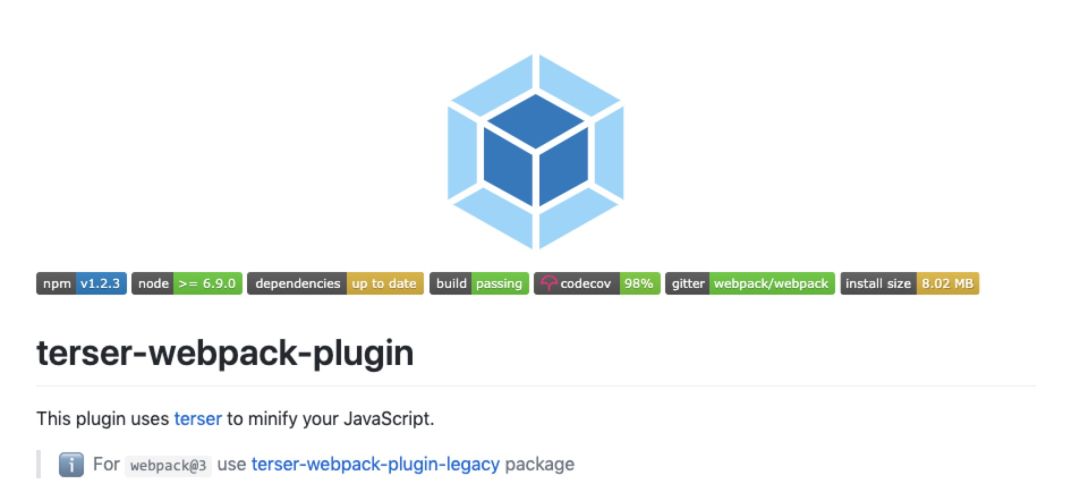
我主要用到了其中这几个功能:
cache,启用文件缓存。parallel,使用多进程并行来提高构建速度。sourceMap,将错误消息位置映射到模块(储存着位置信息)。drop_console,打包时剔除所有的console语句drop_debugger,打包时剔除所有的debugger语句
作为一个管小组前端的懒B,很多时候写页面会遗留 console.log,影响性能。设置个 drop_console就非常香。以下配置亲测有效。
const TerserPlugin = require('terser-webpack-plugin')
....
new TerserPlugin({
cache: true,
parallel: true,
sourceMap: true, // Must be set to true if using source-maps in production
terserOptions: {
compress: {
drop_console: true,
drop_debugger: true
}
}
})
更多的配置请看Terser Plugin
6.2 双端开启 gzip

开启gzip压缩的好处是什么?
可以减小文件体积,传输速度更快。gzip是节省带宽和加快站点速度的有效方法。
服务端发送数据时可以配置 Content-Encoding:gzip,用户说明数据的压缩方式
客户端接受到数据后去检查对应字段的信息,就可以根据相应的格式去解码。
客户端请求时,可以用 Accept-Encoding:gzip,用户说明接受哪些压缩方法。
6.2.1 Webpack开启 gzip
这里使用的插件为: CompressionWebpackPlugin
const CompressionWebpackPlugin = require('compression-webpack-plugin')
module.exports = {
“plugins”:[new CompressionWebpackPlugin]
}
具体配置:
const CompressionWebpackPlugin = require('compression-webpack-plugin');
webpackConfig.plugins.push(
new CompressionWebpackPlugin({
asset: '[path].gz[query]',
algorithm: 'gzip',
test: new RegExp('\.(js|css)$'),
// 只处理大于xx字节 的文件,默认:0
threshold: 10240,
// 示例:一个1024b大小的文件,压缩后大小为768b,minRatio : 0.75
minRatio: 0.8 // 默认: 0.8
// 是否删除源文件,默认: false
deleteOriginalAssets: false
})
)


gzip后的大小从277KB到只有~91.2KB!
6.2.2 扩展知识: nginx的 gzip设置
打开 /etc/nginx/conf.d编写以下配置。
server {
gzip on;
gzip_static on;
gzip_types text/plain text/css application/json application/x-javascript text/xml application/xml application/xml+rss text/javascript;
gzip_proxied any;
gzip_vary on;
gzip_comp_level 6;
gzip_buffers 16 8k;
gzip_http_version 1.1;
...
}
Nginx尝试查找并发送文件 /path/to/bundle.js.gz。如果该文件不存在,或者客户端不支持 gzip,Nginx则会发送该文件的未压缩版本。
保存配置后,重新启动 Nginx:
$ sudo service nginx restart


6.2.3 如何验证gzip?
通过使用 curl测试每个资源的请求响应,并检查 Content-Encoding:
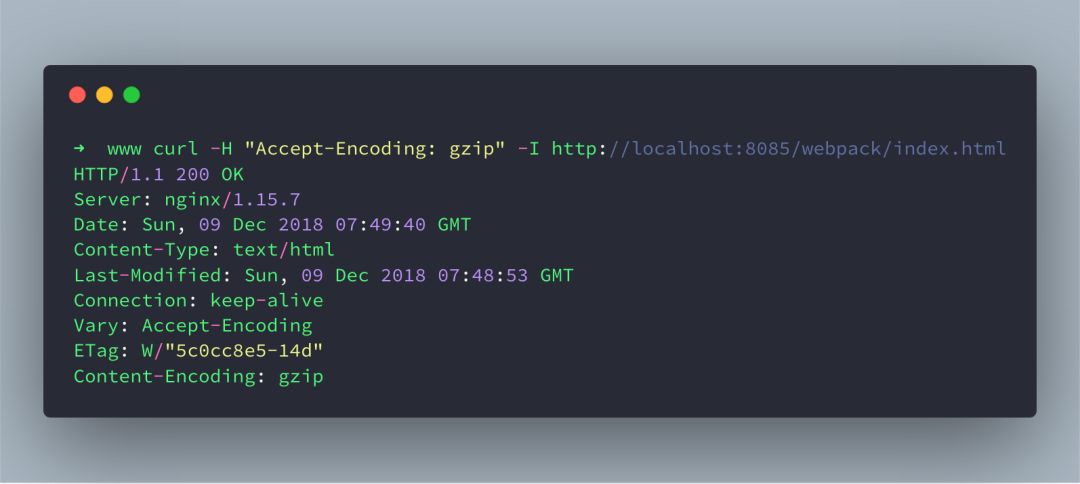
显示 Content-Encoding:gzip,即为配置成功。
求一份深圳的内推
目前本人在(又)准备跳槽,希望各位大佬和HR小姐姐可以内推一份靠谱的深圳前端岗位! 996.ICU 就算了。

微信:
huab119邮箱:
454274033@qq.com
作者掘金文章总集
「从源码中学习」面试官都不知道的Vue题目答案
「从源码中学习」Vue源码中的JS骚操作
「从源码中学习」彻底理解Vue选项Props
「Vue实践」项目升级vue-cli3的正确姿势
为何你始终理解不了JavaScript作用域链?
公众号
以上是关于「Vue实战」武装你的前端项目的主要内容,如果未能解决你的问题,请参考以下文章